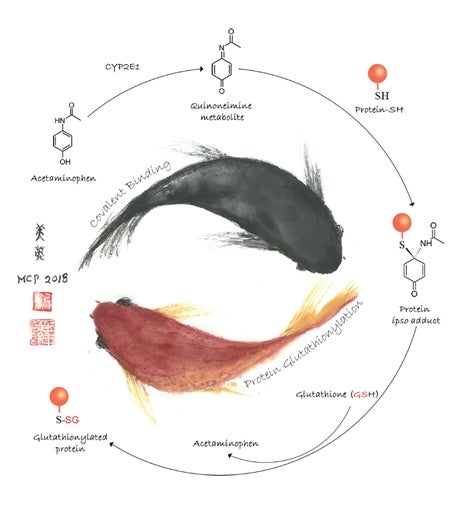Prof Chan said, “Apart from paracetamol, this finding is also significant for other medications that are known to generate similar reactive metabolites such as amodiaquine (anti-malaria drug) and diclofenac (anti-inflammatory drug). Incidentally, these medications also cause liver toxicity. Moreover, the understanding of this novel mechanism is important for the design and development of safer medications and effective antidotes for the emergency treatment of liver toxicity due to drug overdose.”
“The PTM associated with paracetamol toxicity holds important implications for human health and disease. For instance, PTM may be associated with the increase in oxidative stress during the ageing process and the molecules able to modulate this process may potentially become therapeutic candidates. My laboratory is interested to expand into this area of research,” added Prof Chan.

Figure shows the mechanism associated with acetaminophen (paracetamol) toxicity. The two koi fishes swimming in a cyclical fashion symbolises the intricate relationship between the direct covalent interaction of NAPQI with liver protein which forms protein ipso adduct, and the subsequent NAPQI-induced protein glutathionylation (a form of PTM) forming glutathionylated protein.
Reference
Chan JCY; Soh ACK; Kioh DYQ; Li JG; Verma C; Koh SK; Beuerman RW; Zhou L*; Chan ECY*, “Reactive metabolite-induced protein glutathionylation: a potentially novel mechanism underlying acetaminophen hepatotoxicity” MOLECULAR & CELLULAR PROTEOMICS Volume: 17 Issue: 10 Pages: 2034-2050 DOI: 10.1074/mcp.RA118.000875 Published: 2018.


